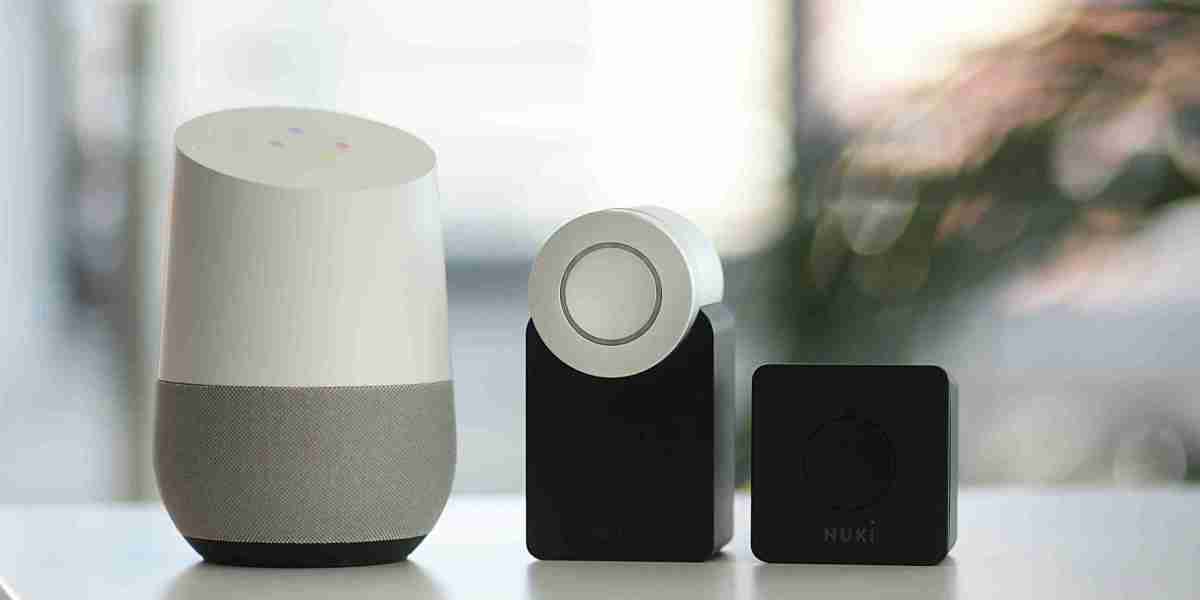The rise of smart home device market has transformed how we interact with technology, shaping the future of homes and urban living. With the advent of advanced sensors, connectivity technologies, and artificial intelligence, smart home devices are revolutionizing daily life by making homes more comfortable, energy-efficient, secure, and automated. This article will explore the latest innovations in the smart home devices market, highlighting the key trends, emerging technologies, and future directions that are setting the stage for a smarter living experience.
1. The Growing Role of Artificial Intelligence in Smart Homes
One of the most significant innovations in the smart home devices market is the integration of artificial intelligence (AI). AI-powered smart assistants, such as Amazon Alexa, Google Assistant, and Apple Siri, have become the backbone of many smart homes. These virtual assistants not only perform voice commands but also use machine learning to adapt to user preferences over time. They can analyze data, recognize patterns, and automate tasks, creating a more personalized experience for homeowners.
AI is also being integrated into other smart devices, such as security cameras, thermostats, and lighting systems. For example, smart thermostats like the Nest Learning Thermostat use AI to learn user schedules and optimize heating and cooling patterns, thereby reducing energy consumption and costs. In the security sector, AI-powered cameras can detect unusual activity and send alerts to homeowners, improving overall home security.
2. The Rise of Smart Energy Management
As concerns over energy consumption and sustainability continue to grow, energy-efficient smart home devices are gaining popularity. Smart energy management systems, such as smart thermostats, energy monitors, and automated lighting, help homeowners optimize energy use and reduce waste.
Smart thermostats, as mentioned earlier, can adjust temperatures based on occupancy patterns, ensuring that energy is not wasted when no one is home. Similarly, smart lighting systems can be programmed to turn off when rooms are unoccupied, and dim automatically based on natural light levels. Additionally, smart plugs and appliances can be controlled remotely, allowing homeowners to switch off devices when they are not in use.
These innovations not only save energy but also contribute to reducing the environmental impact of household energy consumption. With the growing awareness of climate change and energy conservation, smart energy management systems are becoming an integral part of the modern smart home.
3. The Impact of IoT Connectivity
The Internet of Things (IoT) is another driving force behind smart home innovations. IoT devices are connected to the internet, allowing them to communicate with each other and with users remotely. This interconnectedness is at the core of many smart home systems, enabling automation and seamless control.
For instance, IoT-enabled smart security systems allow homeowners to monitor their property from anywhere in the world using smartphones or tablets. Smart locks can be controlled remotely, granting access to family members or service providers even when the homeowner is not at home. Similarly, IoT sensors in kitchen appliances, such as refrigerators and ovens, can send real-time data to users about food inventory and cooking progress, creating a more convenient and efficient home experience.
The integration of IoT in smart homes extends beyond convenience, offering significant improvements in safety, energy efficiency, and remote monitoring.
4. Voice-Controlled Devices and Integration
Voice-controlled devices have become one of the most popular innovations in the smart home space. With virtual assistants like Amazon Alexa, Google Assistant, and Apple Siri, homeowners can now control a wide range of devices simply by speaking. This includes adjusting the temperature, turning lights on and off, playing music, setting reminders, or controlling smart appliances.
Voice control offers a hands-free, user-friendly way to interact with smart home devices. It enhances accessibility, especially for people with disabilities or limited mobility. Moreover, voice-controlled devices are now being integrated with a growing number of home appliances, security systems, and entertainment devices, making them central hubs for managing multiple smart devices in a household.
The continued development of voice recognition technology ensures that these devices will become even more accurate and responsive, making them even more indispensable in everyday life.
5. Smart Home Security and Safety Innovations
The demand for enhanced home security has led to rapid advancements in smart home safety technologies. From smart doorbells with video streaming capabilities, such as Ring, to motion-detecting cameras and smart locks, these devices provide homeowners with more control and peace of mind.
Smart security systems are now integrated with AI and IoT to deliver more advanced features. For instance, some systems can automatically detect and differentiate between people, pets, and objects, minimizing false alarms. Others can be programmed to send real-time notifications or initiate emergency protocols in case of break-ins or other suspicious activities.
Additionally, smart smoke detectors, carbon monoxide alarms, and leak detection systems are also becoming common in smart homes. These devices can alert homeowners to potential hazards before they become serious problems, enhancing overall safety and reducing the risk of damage or injury.
Conclusion
The innovations in the smart home devices market are reshaping how we live, offering new levels of convenience, security, and energy efficiency. As AI, IoT, and voice control technologies continue to evolve, we can expect even more intelligent and integrated systems that make our homes safer, smarter, and more sustainable. With the pace of innovation continuing to accelerate, the smart home is no longer a futuristic concept—it is a present-day reality.



